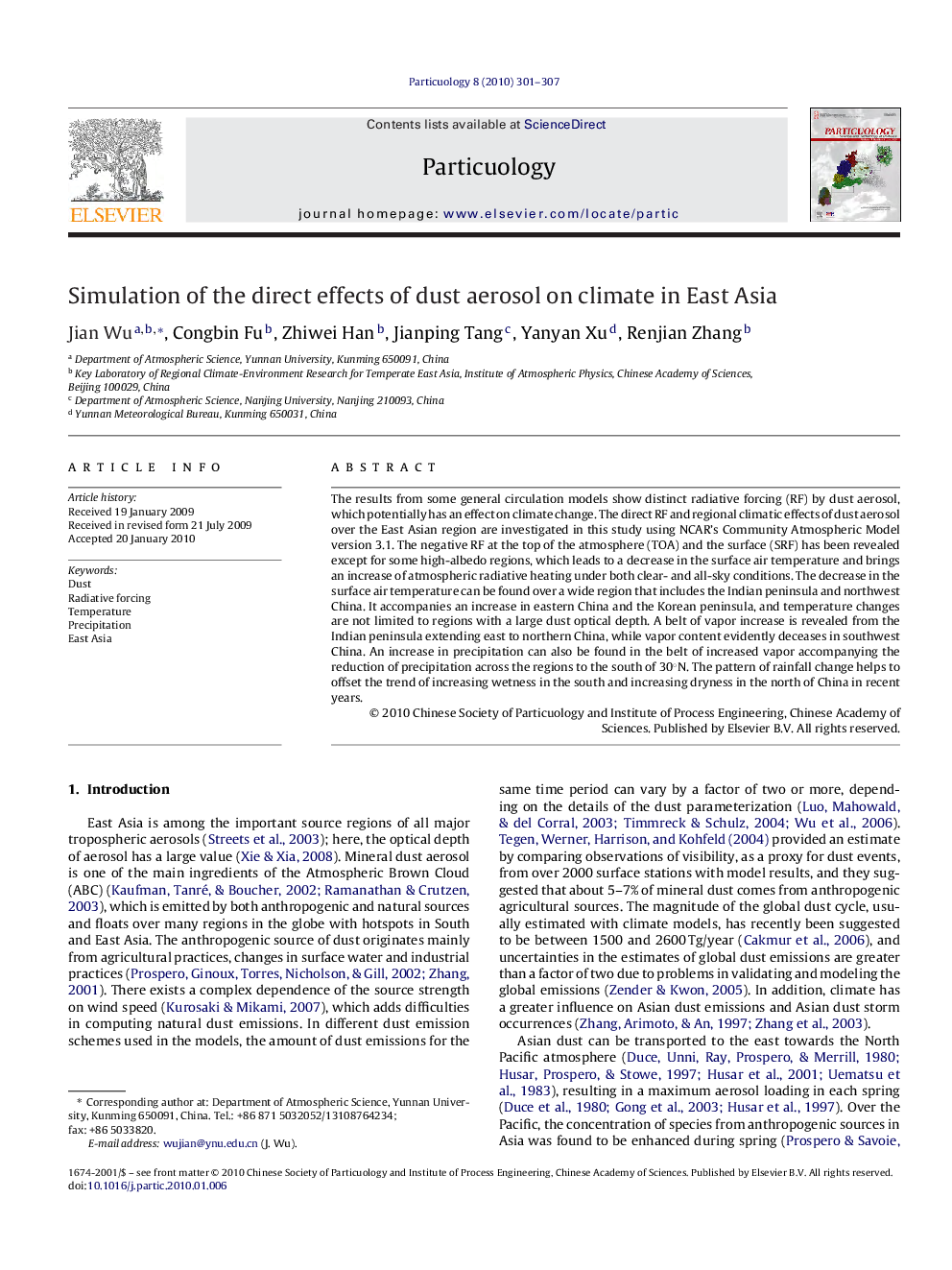| کد مقاله | کد نشریه | سال انتشار | مقاله انگلیسی | نسخه تمام متن |
|---|---|---|---|---|
| 672433 | 887504 | 2010 | 7 صفحه PDF | دانلود رایگان |

The results from some general circulation models show distinct radiative forcing (RF) by dust aerosol, which potentially has an effect on climate change. The direct RF and regional climatic effects of dust aerosol over the East Asian region are investigated in this study using NCAR's Community Atmospheric Model version 3.1. The negative RF at the top of the atmosphere (TOA) and the surface (SRF) has been revealed except for some high-albedo regions, which leads to a decrease in the surface air temperature and brings an increase of atmospheric radiative heating under both clear- and all-sky conditions. The decrease in the surface air temperature can be found over a wide region that includes the Indian peninsula and northwest China. It accompanies an increase in eastern China and the Korean peninsula, and temperature changes are not limited to regions with a large dust optical depth. A belt of vapor increase is revealed from the Indian peninsula extending east to northern China, while vapor content evidently deceases in southwest China. An increase in precipitation can also be found in the belt of increased vapor accompanying the reduction of precipitation across the regions to the south of 30°N. The pattern of rainfall change helps to offset the trend of increasing wetness in the south and increasing dryness in the north of China in recent years.
Journal: Particuology - Volume 8, Issue 4, August 2010, Pages 301–307